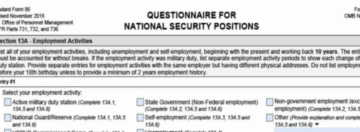DoD CAF by the Numbers

Many posts on this forum have commented on how long the adjudication phase of the background investigation process is and that no reliable benchmark information is available on timelines. It can be frustrating I know, but here are a few things to consider. The Department of Defense Consolidated Adjudication Facility (DoD CAF) was also impacted by the many events that led to the current 700,000+ backlog of investigations, and when the Office of Personnel Management stood up the National Background Investigations Bureau and turned the taps back on after sorting out their Federal and contractor investigator workforce, the caseload for the DoD CAF tripled. Here are a few interesting facts to consider:
The DoD CAF:
- Makes 95% of all DoD personnel security determinations
- Makes 75% of all Federal Executive Branch personnel security determinations
- Supports over 4 million personnel worldwide with security, suitability, and CAC credentialing determinations
- On average, takes 900,000 personnel security actions per year
- Fields and responds to over 50,000 phone calls and 20,000 emails at their Call Center
- Supports over 43,500 Industrial Security Managers and Facility Security Offices worldwide
- Responds to over 400 Congressional inquiries per year
As you can see based just on the numbers, the DoD CAF, located at Ft. Meade, Md., is quite the busy place. What many don’t realize is that they don’t just handle national security clearance investigations, but also process and review investigations for suitability and credentialing. As far as the rest of the Federal government is concerned, agencies who adjudicate investigations for their own personnel (e.g. DHS, DOJ, DS, DOC, DOI, NASA, and IC Community agencies), the same processes are followed with slight variations. It is difficult to put a hard timeline on the adjudication phase because of multiple factors involved in the process, but there should also be a way to streamline non-issue cases for review and adjudication in a reasonably short period of time. Challenges continue on both the front and back ends of the background investigation process. Hopefully they are worked out in the very near future.



Some transparency to at least understand where one is in the system, and to know they’re not forgotten would help immensely.
When you are in the same “stage” of the process for half a year or longer, one really starts to wonder if this whole thing wasn’t some ruse or a figment of your imagination.